The Supermicro H11DSi Motherboard Mini-Review: The Sole Dual EPYC Solution
by Dr. Ian Cutress on May 13, 2020 8:00 AM EST- Posted in
- Motherboards
- AMD
- Supermicro
- Naples
- EPYC
- 10GbE
- Rome
- H11DSi
IPMI
I often find with dual socket motherboards that some extra love and care is needed to get them to work properly, especially because normal troubleshooting techniques we get on consumer motherboards (like a two-digit debug) aren’t present. This is where the baseband management controller comes in, and being able to remote access the system over the network.
One of the new features that Supermicro has implemented here, due to California law, is that no system can be shipped with a default admin/password combination any more. The H11DSi still has the main admin user as ADMIN, but the password is printed on a sticker on the motherboard – you’ll find it in the area just below the DRAM slots. Ours was a 10-letter password in all caps.
By default the IPMI interface will accept a DHCP IP, although this can be changed. Once entered, we get Supermicro’s latest interface.
Within the first few pages is the system as detected, and we can see here it detects the two processors as well as the memory and BIOS versions. Users can update the BIOS and BMC through this interface.
There are 54 sensors on the motherboard, relating to temperature, voltages, and fan speeds. Through the IPMI, users can set high and low limits for any of these sensors. Any discrepancy from the expected values is recorded in the health log.
The big area for the IPMI is the configuration tab, which offers access to networking and server controls.
Ports can also be set for the various use cases.
One thing to note with this motherboard is the fan speeds. While there are eight different 4-pin fan headers on the board, the amount of control offered to the end-user is pitiful. There is nothing in the BIOS to allow users to control the fan speed – instead a user has to access the IPMI, and even then the options are limited to four:
By default this is set to Optimal Speed, but a modern system should be able to support fan curves. It seems odd that consumer motherboards are by far ahead of the curve here, as fan control might be something required for a server board depending on the environment.
Like most server motherboards, there is also a service log to show what was changed and when.
For remote control/iKVM, the interface supports only a HTML5 login, which is how we accessed the system. The interface allows for full power control, including a software shutdown mode.




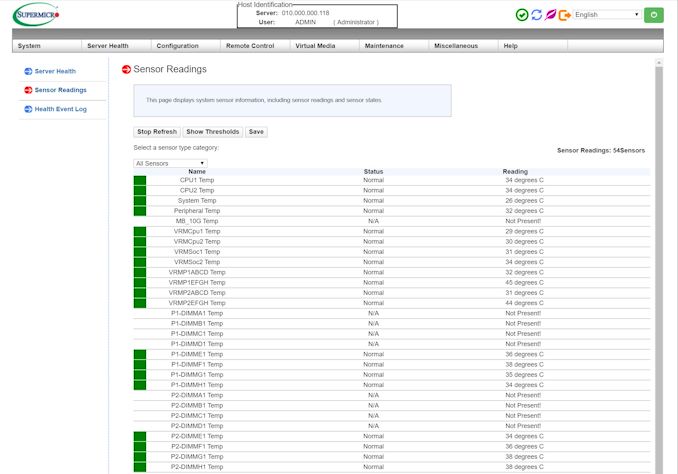
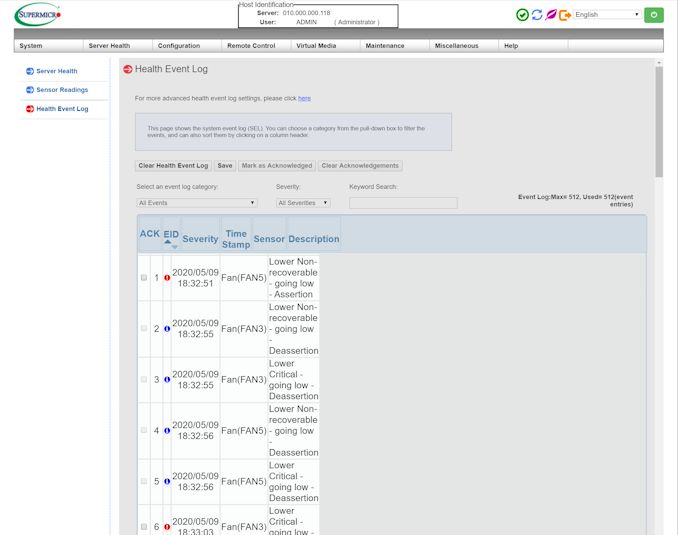
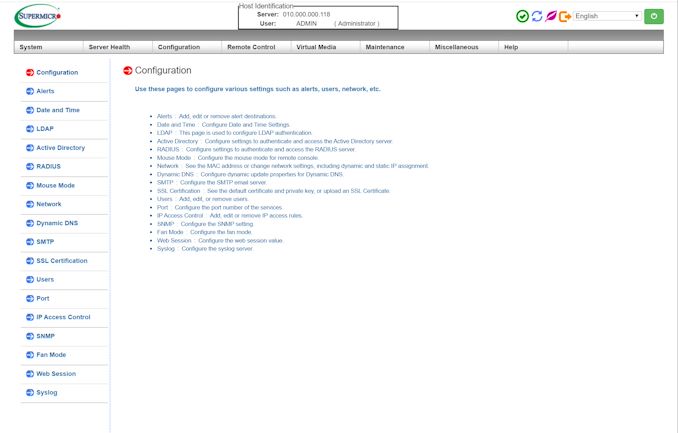
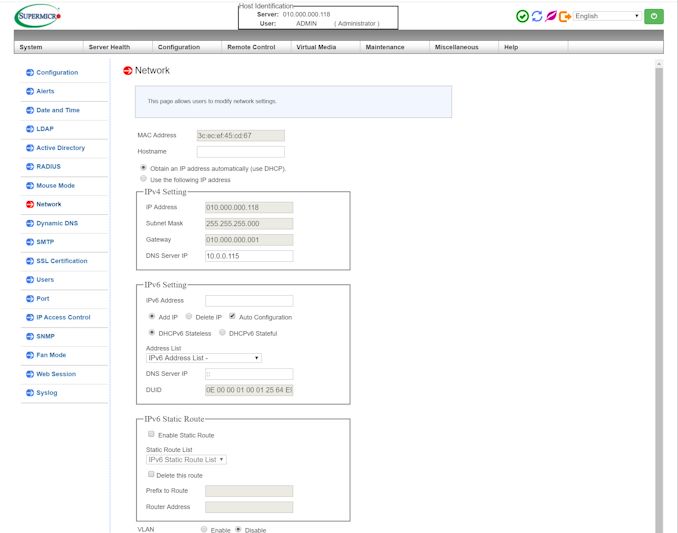
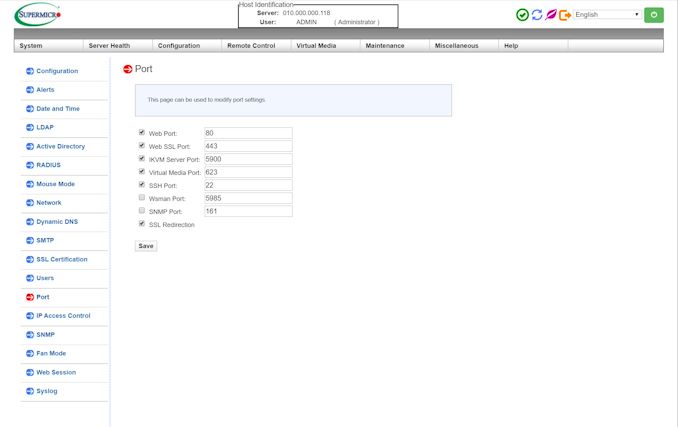
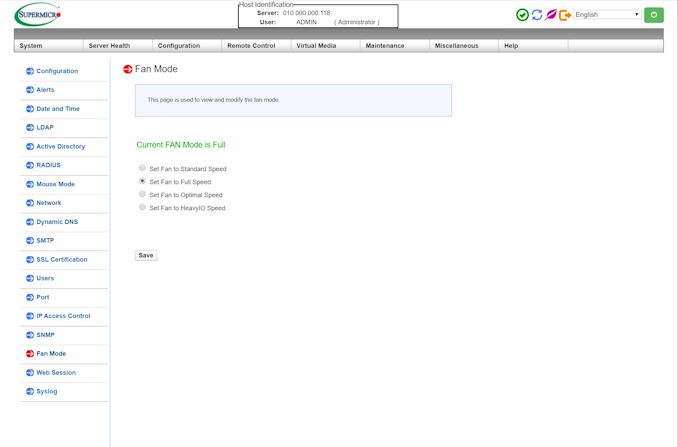
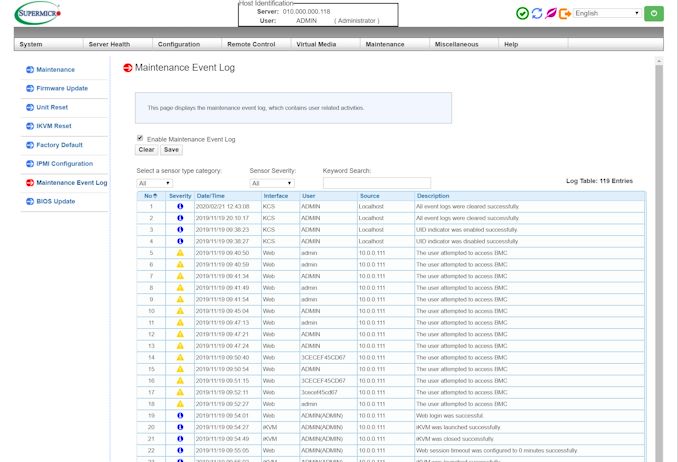
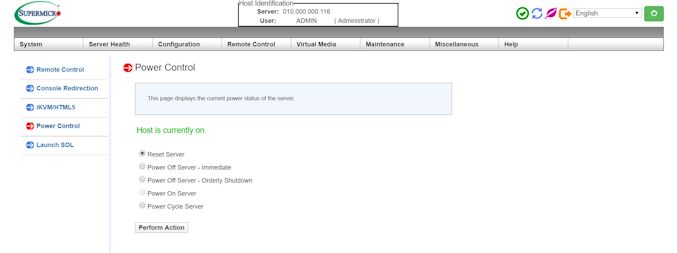














36 Comments
View All Comments
johnwick - Monday, June 8, 2020 - link
I am glad to be here and read this wonderful article. all the info you provide to us, it was very informative to us! http://www.bestvpshostings.com/Pyxar - Wednesday, December 23, 2020 - link
Dear AMD, 1994 wants their comport and VGA connectors back..Thx, sincerely,
All the geeks in 2021.
boiledeggdiet - Friday, June 11, 2021 - link
Actually, I was searching for the best motherboard but I got little confuse here. https://fashionhealthbuzz.wordpress.com/2021/06/02...